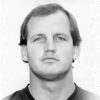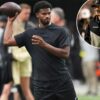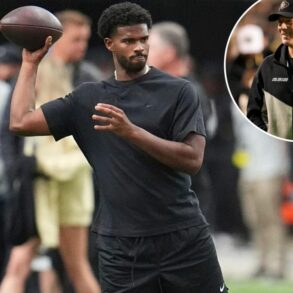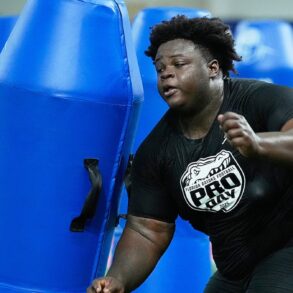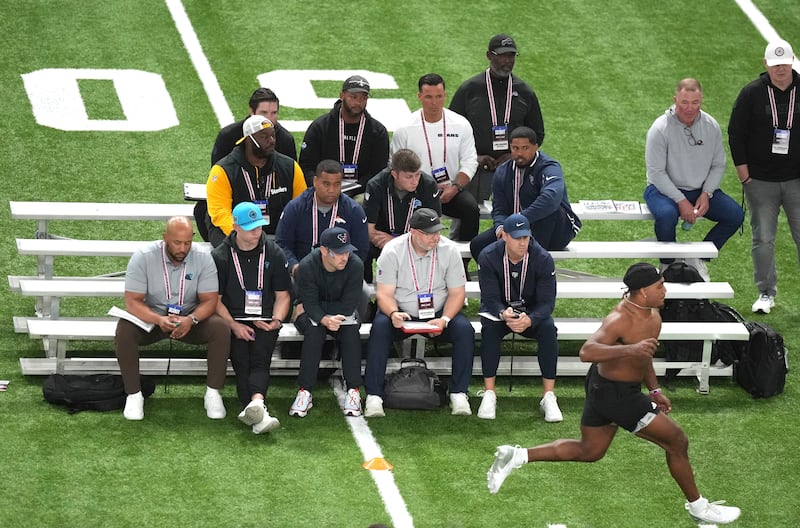
INDIANAPOLIS — When San Francisco 49ers general manager John Lynch interviews a draft prospect, he often feels as though he’s entered a strange new scouting universe.
Today’s players talk openly about agents and endorsement deals, and they’re not shy about describing journeys to three or four schools or playing for an equal number of head coaches.
Lynch may not like everything about today’s college landscape, but he realizes the 49ers must adapt or they’ll face severe consequences — just like every other NFL front office.
“We’re still kind of in that Wild West,” he said in February while describing the interview process before the April 24-26 draft. “It’s great to learn about them, but when you hear them (say), ‘My agent and I made a decision,’ it’s like ‘Wait, you’re not supposed to have an agent?’ Yes, you do have agents. High school kids have agents. It’s a different world.”
NFL scouts have spent decades navigating these sorts of changes.
They long ago abandoned the practice of relying primarily on the eye test or film study to make draft picks, instead investing significant time and money unearthing morsels of background and medical information while commiserating with college coaches they trust.
Now they’re living in a new world of adjustments.
ADVERTISEMENT
As the transfer portal essentially turned college athletes into free agents with hefty NIL deals, some scouts find themselves going through more complex webs to do a thorough job.
“Before all these guys transferred, you’d have two, three, four years of information on a player,” Titans coach Brian Callahan said. “If you were an area scout, you were building four years of a profile on a player. Now these guys might transfer two times, usually at least once, sometimes twice and now there’s gaps in the information. The assistant coaches don’t know them as well. You don’t have the same depth of character evaluation maybe.”
While some teams sought out third-party help to fill those voids, others brought college coaches onboard.
This offseason, the Cincinnati Bengals hired defensive coordinator Al Golden from Notre Dame and the Las Vegas Raiders hired Chip Kelly from Ohio State just months after they matched wits in last season’s national championship game. The Cleveland Browns, meanwhile, promoted Tommy Rees from passing game coordinator to offensive coordinator just one year after he left Alabama following Nick Saban’s retirement.
Why? Those organizations believe the affiliations they had with the players they coached and recruited can provide insight into additional draft prospects.
“It’s valuable he’s got that experience,” Bengals senior director of player personnel Duke Tobin said. “He’s going to have recruited those guys, he’s going to have played against a lot of those guys, he’s going to have game-planned against a lot of those guys. What he knows, we’ll download and he won’t be shy to help us.”
Naturally, there’s a flip side to Callahan’s concerns, too.
Player movement gives scouts a chance to see how non-power conference stars stack up against stronger competition and how they fit into multiple schemes before they don an NFL jersey. The benefit of playing for more coaches also means teams can paint a more complete picture thanks to more voices.
Even those NIL deals have found their way into the scouting toolbox.
“It’s a way for us to evaluate how much they love the game, how they’re going to handle themselves professionally,” said John Schneider, Seahawks president of football operations. “There are guys that have two, three cars, guys making $6 million and some guys making, $30,000. So it’s another part of the information to put in the evaluation bucket.”
Analytics also are playing an increasingly important role in personnel decisions, even excluding the draft, and teams no longer seem hesitant to discuss using technology, such as virtual reality, to help college players make a smooth transition to the pro level.
Washington Commanders officials, in fact, believe VR helped Jayden Daniels go from 2023 Heisman Trophy winner to 2024 NFL Offensive Rookie of the Year.
“Jayden was the guy we knew we were going to draft, and we started talking with Cognilize, which is the company we use for the VR,” team GM Adam Peters said. “They’re very committed to Jayden, which is really cool, too. Whenever we’ve needed anything, they’ve done a great job helping us out. It’s a big part of his development.”
The bigger question is what’s next?
The Minnesota Vikings and Las Vegas Raiders are already dabbling in the world of artificial intelligence and figuring how it can help their scouts.
“I don’t know if you need to be the first team, but you don’t want to be the last that incorporates it.” said Vikings GM Kwesi Adofo-Mensah, who worked previously as a portfolio manager and commodities trader on Wall Street. “You need to get a lot of data, right? You need to get large numbers of years, number of interactions, numbers of results, to really get good insights and we’re building toward that. You want to make sure that you don’t use a two-year insight. Think about an AI model as a scout. Would you trust a one-year scout or the 10-year scout?”
This post was originally published on this site be sure to check out more of their content.


